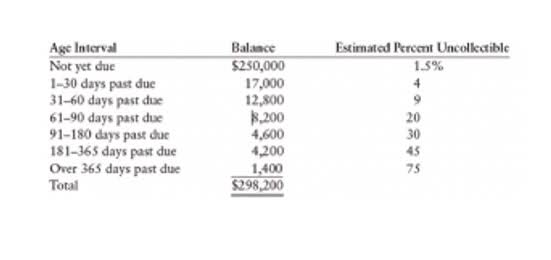Our editors are committed to bringing you unbiased ratings and information. We use data-driven methodologies to evaluate financial products and companies, so all are measured equally. You can read more about our editorial guidelines and the banking methodology for the ratings below.
Find The Best High-Yield Savings Accounts Of 2024
These accounts, like debits and credits, increase and decrease revenue, expense, asset, liability, and net asset accounts. To better visualize debits and credits in various financial statement line items, T-Accounts are commonly used. Debits are presented on the left-hand side of the T-account, whereas credits are presented https://marquez-art.ru/biblioteko/jozefo/04.htm on the right. Included below are the main financial statement line items presented as T-accounts, showing their normal balances. Lastly, we discussed the concept of normalizing entries in accounting, which involve adjustments made to financial records to remove abnormal or non-recurring transactions or events.
Money Market Account vs. Certificate of Deposit (CD)
- By adhering to the expected normal balances, accountants maintain the integrity and usefulness of the financial statements.
- If the rented space was used to manufacture goods, the rent would be part of the cost of the products produced.
- It is important to note that the normal balance is not an indication of whether an account has a positive or negative balance.
- Consider another banking product, like CDs, if you’d like a fixed interest rate.
- Since Accounts Payable increases on the credit side, one would expect a normal balance on the credit side.
- Any balance above $500, big or small, earns the same dividend rate with Bethpage.
Instead, it simply identifies the side of the account where increases are recorded. For example, a negative cash balance is still recorded on the debit side, as it represents an increase in the cash account to correct the negative balance. Salaries http://teleservise.ru/news/40-moloko-i-rastitel-noe-maslo-dor.html Expense will usually be an operating expense (as opposed to a nonoperating expense). Depending on the function performed by the salaried employee, Salaries Expense could be classified as an administrative expense or as a selling expense.
What are the Normal Balances of each type of account?
This means when a company makes a sale on credit, it records a debit entry in the Accounts Receivable account, increasing its balance. Conversely, when the company receives a payment from a customer for a previously made credit sale, it records a credit entry in the Accounts Receivable account, decreasing its balance. This means that when you increase an asset account, you make a debit entry. For instance, when a business buys a piece of equipment, it would debit the Equipment account. Any interest earned in a money market account is considered income by the IRS. Your bank or credit union should provide a 1099-INT form each year reporting taxable interest payments made to your account.
Understanding the relationship between normal balances and the categories of assets, liabilities, and equity is crucial for maintaining balance in the accounting system. Overall, the importance of normal balances in accounting cannot be overstated. By understanding and applying normal balances, http://www.fabuban.com/nonprofit-help.html accountants can ensure the integrity and usefulness of financial information. An account with a balance that is the opposite of the normal balance. For example, Accumulated Depreciation is a contra asset account, because its credit balance is contra to the debit balance for an asset account.
- Debits and credits differ in accounting in comparison to what bank users most commonly see.
- Mitch has more than a decade of experience as personal finance editor, writer and content strategist.
- Money market rates are still high in 2024, but they may have plateaued.
- Sales are reported in the accounting period in which title to the merchandise was transferred from the seller to the buyer.
- Knowing the normal balances of accounts is pivotal for recording transactions correctly.
Explore how it affects financial statements and reporting accuracy. Under the accrual basis of accounting the account Supplies Expense reports the amount of supplies that were used during the time interval indicated in the heading of the income statement. Supplies that are on hand (unused) at the balance sheet date are reported in the current asset account Supplies or Supplies on Hand.
What is the Normal Balance for Owner’s Withdrawals or Dividends?
However, they’re not without drawbacks and might be too restrictive for some savers. The Federal Reserve does not set interest rates for banks, but it does set a federal funds rate. This is the interest rate range used to guide lending between banks and help promote economic stability, and financial institutions look to it for guidance on setting their own rates for customers. In September 2023, the Federal Open Market Committee announced a pause to federal funds rate hikes, marking the end of ten consecutive rate increases dating back to March 2022. The Fed has held rates steady at the target range of 5.25% to 5.50% since then.
- Bethpage Federal Credit Union’s money market account offers a competitive 0.10% to 2.00% APY depending on the balance tier with a $500 minimum deposit requirement.
- We’ve covered these in our prior lessons but we need to keep drilling these into your knowledge if you are just starting out.
- Unlike a money market account, CDs are time-deposit accounts that generally lack liquidity.
- When the account balances are summed, the debits equal the credits, ensuring that the Academic Support RC has accounted for this transaction correctly.
Except for fees and penalties, there is no way to lose insured deposits in an MMA. Below is a look at the average annual APYs for money market accounts dating back to 2009, according to FDIC data. This account’s APY is above average but fairly low when compared to the best money market accounts. Vio Bank’s Cornerstone Money Market Account made our list because it earns one of the highest APYs available and, unlike many MMAs, it doesn’t come with an ATM or debit card.





